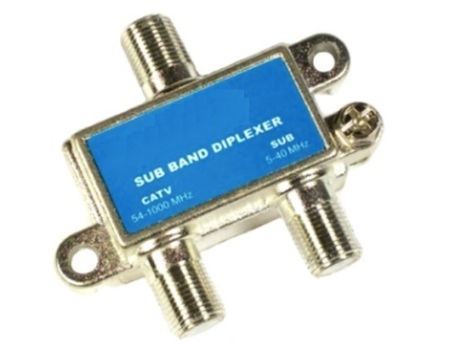An SCTE Cable-Tec Expo Jargon Descrambler

Get complete coverage of Cable-Tec Expo 2016
The heavy lifters in tech are in Philadelphia this week for the annual Cable-Tec Expo, put on by the Society of Cable Telecommunications Engineers. If you’re not going, or need a quick brush-up on what promises to be a deep vat of technological mumbo-jumbo, here’s the tip sheet:
DOCSIS 3.1 and “FDX”: Let’s level-set with the Data Over Cable Service Interface Specification as the blueprint for cable modems, gateways, and the devices that make broadband happen. Its latest version, 3.1, offers a massive bandwidth boost over prior iterations -- to the tune of 50% more capacity flowing to and from homes. Gear based on 3.1 is starting to roll out. That alone will likely be a big source of conversation this week, because it’s a “non-trivial” rollout, as engineers tend to say.
But wait! There’s more, in the next version of DOCSIS, which comes with a prefix -- “Full Duplex” -- sometimes abbreviated “FDX.” (The word “duplex” is a telecom term that’s abbreviated as “DX” -- hence “FDX” for Full Duplex. It means that both ends of a call can talk at the same time. By contrast, walkie-talkies are “half duplex.”)
CableLabs: ‘Full Duplex’ Reaches Specification-Writing Phase
The whole point of Full Duplex DOCSIS is to get to symmetry in both signal directions -- to and from homes. Right now, about 5% of the total carrying capacity of a cable system is carved out for stuff going “upstream,” from homes. The rest is apportioned to stuff going “downstream,” to homes. So, it’s highly asymmetrical, which is fine, because we’re still consuming way more stuff over broadband than we’re transmitting.
But now that so many things come with built-in video cameras, and we spend more and more time communicating with images and video, it’s time to start thinking about a need for multi-Gigabit speeds, in that skinny upstream slice. That’s what FD DOCSIS does. Last week I heard someone call it “Symmetrical DOCSIS.” Probably easier on the frontal lobes.
Diplex Filters /Diplexors: There’s a catch, when it comes to going to symmetrical DOCSIS, and it’s those little, three-port doohickeys called “diplex filters,” or “diplexors” (see related image for an example of one). They exist to “notch out” the upstream and downstream signal directions.
Thing is, going Full Duplex necessitates a completely passive network, meaning that nothing can be powered, after the node. (This is also why you hear the term “n+0,” or “node plus zero,” to mean zero amplifiers after the node.)
A very unofficial Facebook poll of tech-pals indicates that as many as 4.5 million of them exist in U.S. systems. So, part of the strategic thinking about broadband symmetry and how to build for it goes like this: “Geez, if I have to pull out all those diplexors, shouldn’t I look at going deeper with fiber, instead?”
Sticky clients: This one has so many potential and amusing interpretations! But in a tech context, it’s a WiFi term. The “client” is anything trying to connect to a WiFi access point. When it gets “sticky, it’s usually in an environment with lots of access points (“APs”) -- but for whatever reason, it gets “stuck” on one, even though that one AP isn’t doing the best job at connectivity for that client.
NB-IoT and LoRA: Over in the land of machine-to-machine (M2M) and the Internet of Things (IoT), lots of debate swirls around the use of radios that send small amounts of data over very long distances. One camp is “NB-IoT,” which stands for “Narrowband Internet of Things.” Another is LoRA, which stands for “Long Range Radio.” At issue for service providers and their suppliers is the question of which will “win out” in the marketplace -- and the larger question of just how many radios need to go into in-home gear, like gateways.
That’s the shortlist of tech talk this week at the Expo -- but as you can imagine, it’s a much, much longer list. We’ll keep the descrambler machine on!
Multichannel Newsletter
The smarter way to stay on top of the multichannel video marketplace. Sign up below.



